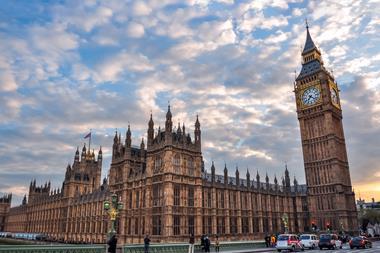A bright orange photo-pass is a little used but nonetheless essential tool of Kevan Brown's trade.
Issued by Railtrack, it means that the specialist claims controller from St. Paul has passed his trackside safety course and is authorised to attend emergencies. It's the sort of document a railway insurer hopes he will never need to use, but at 8.25am on Tuesday October 5, Brown took a call from his boss about a crash at Paddington and reached into his pocket for the pass.
Even with the sketchy details passed on from technical claims manager David Grimley, there was no doubt he would be needed at the scene. In 1997, the Redhill-based niche insurer had taken a calculated step into the post-privatisation rail business, securing a place as insurer to 21 out of the 25 train operating companies. Now, with First Great Western and Thames Trains both involved in the crash, St. Paul was placed in the unusual position of insuring both parties.
Brown's role that day would be to support the train companies' staff and help channel immediate financial assistance to the victims. Back at the office, Grimley would spend the day planning the framework for the future claims handling process. Together, they embarked on an "act-now, ask questions later" policy that the company believes demonstrates there are no conflicts of interest in having just one insurer.
Sadly, St. Paul was able to draw on experience – it was insurer to Great Western in the Southall crash two years ago.
Brown abandoned his normal journey to work. Instead, he caught a train from Sevenoaks to London, getting regular updates on the accident over his mobile from Grimley. He also used the journey time to appoint three teams of loss adjusters with specialist rail experience: McLarens Toplis for Great Western, Miller Pycroft for Thames Trains, and Cunningham Ellis & Buckle for the rolling stock. Tactfully, he withdrew to the train's corridor to spare fellow passengers the details of his calls.
Instant access
The orange pass gained Brown access to the police incident site in a Sainsbury's car park overlooking the crash scene less than two hours after the accident. There, as police co-ordinated the evacuation and ambulances ferried the walking wounded to hospital, Brown implemented St. Paul's own disaster plan. There were three aspects to it: reassuring the train companies that St. Paul was there to help, providing financial assistance for the victims, and taking the first steps in the investigation.
By 11am, two directors from each of the train companies had reached the scene, "visibly shocked", as Brown remembers, with the pair from Great Western hardly believing they were at another crash scene even as the enquiry into the Southall crash was underway.
Violent deaths
As Deputy Prime Minister John Prescott arrived to pledge a public inquiry, and press speculation on the causes mounted, the directors agreed that they needed a closer view of the accident site.
British Transport Police agreed to escort the group to within 50 metres of the crash scene. By this time most of the injured passengers had been helped away, leaving the blackened, mangled carriages to the rescue workers and the evidence of violent deaths. "It was pretty horrific. There were a lot of bodies shrouded with blue sheets. That's what sticks in my mind," says Brown quietly.
But the best time to gather evidence is always immediately after an accident. The loss adjusters performed the grim task of scrutinising the trackside for evidence. "You can establish a certain amount from looking at the scene, such as the position of the signals, and the track layout or evidence of braking," explains Brown.
Soon they were joined by teams of railway forensic experts appointed by St. Paul.
Back at the supermarket car park, the final element of St. Paul's policy was taking effect. Hundreds of shocked but uninjured passengers on the Paddington-bound train needed urgent transport home, and a fleet of taxis had been summoned. Their passengers were to be the first to benefit from the £200,000 emergency fund St Paul made available.
As the day wore on, the funds were used to pay for the hotel facilities used by the police's family liaison officers for anxious friends and relatives. Later that week, the money allowed the coffins of overseas victims to be repatriated as quickly as possible.
No quibble, no questions
The "no quibble, no questions" relief fund was a foretaste of how St. Paul would handle the rest of the claims. A meeting held the morning after the crash between the insurer, the two train companies, Railtrack and its infrastructure contractors, confirmed the terms of CAHA – the railway industry's Claims Allocation Handling Agreement.
This standing agreement means that post-accident compensation claims will be met as they arise, with questions of liability postponed until all the facts are clear.
With uncertainty over the death toll leading to reports of 90, then 170 possible victims, St. Paul believes that its attitude helped calm the situation for the train companies. "We gave them the confidence we'd deal with compensation, and work with them to deal with potential criminal liability," says general manager Jack Moore.
Eight of St. Paul's most senior claims staff formed a team to deal with the most seriously injured and the bereaved. Twenty-one families with relatives killed in the disaster have so far requested compensation, and St. Paul is happy to let the remaining families take their time over submitting a claim. Where victims were still in hospital, St. Paul hasn't waited for claims to arrive but has asked its own medical advisers to assess whether the patients needed special treatment or facilities as they recover.
Meanwhile, a smaller team of four dealt with the passengers who suffered minor injuries or lost property in the crash. So far, St. Paul hasn't seen evidence of inflated or ill-founded claims. "People are more sensible than with household claims. There seems to be a different mentality," says Brown. "On the other hand, the company has found that many people caught up in the accident distrust insurers. People worry that if they get a payment, it'll stop them making a claim afterwards," he adds.
Liability
Attention is now returning to the issue of liability, where St. Paul has two separate teams acting for the Great Western and Thames Trains. The Health and Safety Executive and the police are conducting investigations, with St. Paul keeping abreast of developments. Lord Cullen's public inquiry is now expected to get underway next March, and could result in punitive fines for the companies involved.
St. Paul anticipates that the investigations and enquiries will not drag on for as long as was the case with Southall.
And on the claims side, it expects to be able to close most of the files by the middle of next year. The company also expects to be able to close the file marked "exposure".
Thanks to reinsurance, St. Paul's maximum net liability should be capped at $10 million (c.UK£6m).
The actual level of pay-outs could easily exceed that three or four times over. But then, as St Paul's attitude makes clear, its not as if anyone is counting.
Hosted by comedian and actor Tom Allen, 34 Gold, 23 Silver and 22 Bronze awards were handed out across an amazing 34 categories recognising brilliance and innovation right across the breadth of UK general insurance.













































